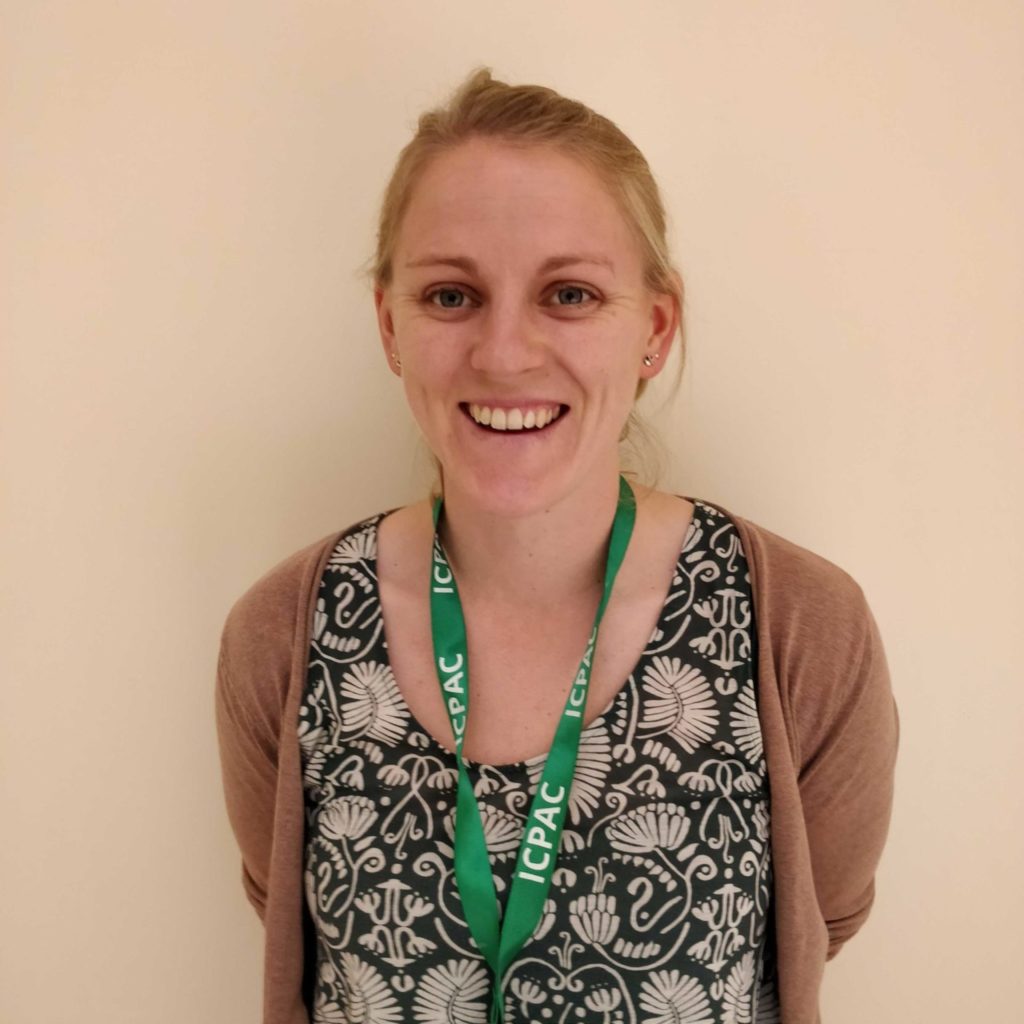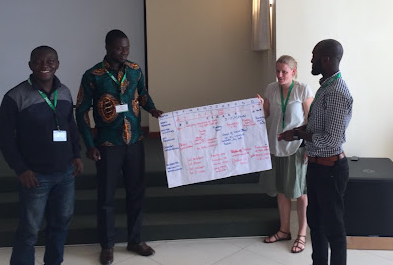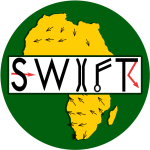
Linda Hirons is a researcher in the National Centre for Atmospheric Science (NCAS) at the University of Reading. Within SWIFT she was co-lead for the project’s work programme on seasonal to sub-seasonal (2-4 week) weather prediction, a strand that works to advance both scientific and operational capacity on these timescales. According to Ben Lamptey, Africa co-lead for SWIFT, she has “contributed to seamless prediction in Africa” and has shown “evidence of bridging the gap between synoptic and seasonal forecast”. Steve Woolnough, co-lead on the seasonal to sub-seasonal work programme and NCAS lead for SWIFT, commented that “SWIFT has provided Linda within an opportunity to transition from research scientist to research leaderership. In particular her leadership of the testbed and the application of co-production principles has challenged us all to think about how we engage with different disciplines within climate science and with stakeholders to develop climate services collaboratively.” Here she gives a personal account of her experiences with SWIFT.
Before the start of the African SWIFT project I was working as a post-doctoral research scientist within NCAS at the University of Reading, on a related Future Climate for Africa (FCFA) project investigating how large-scale changes in the state of the atmosphere in the tropics affect local weather over Africa. I was very interested in the application of this science to the decision-making context of users and had had some experience through consultancy with the (then) Department for International Development (DfID) about the potential impacts of other tropical weather events (developing el Niño events in 2015/2016) on a number of humanitarian sectors. These research and analysis skills, as well as the understanding I had developed, were a key part of the scientific expertise that I could bring to the sub-seasonal (2-4 week forecasting) work package of the SWIFT project.
During SWIFT I developed in my career and considerably advanced my skills in a number of areas. I started as a researcher on the SWIFT project supporting the University of Reading team within the sub-seasonal prediction work package. I also had my first opportunity to co-supervise post-doctoral researchers in the UK. Through the course of the project, this role developed as I took over the leadership of the sub-seasonal work package at Reading, co-leading with Cheikh Dione from the African Centre of Meteorological Applications for Development (ACMAD). This involved leading and coordinating 252 person months of resource across 13 project partners. It required me to coordinate the activities and tasks across all partners, organise and chair regular online meetings and keep track of and record the partner progress against our eight deliverables (aims specified at the beginning of the project) as well as consistently report back to the project management and other work packages. Our work package met online considerably more than is required merely for reporting purposes; we developed a strong and supportive collaborative network in which early career researchers were given numerous opportunities to participate and contribute. By the end of the project as a work package we created opportunities to get peer-interaction and supervisory guidance on scientific analysis, real-time forecasts and training every month. Informal seminars to discuss our scientific research, forecast discussions to compare and verify SWIFT-developed forecasts across regions, and coding clinics for training in computing were all held monthly and were well attended and engaged with. Having the opportunity within SWIFT to manage such a significant person-resource has enabled me to develop my leadership and management skills in an international, cross-cultural context. Importantly, the international network and collaborations that I have built up and developed as a result of SWIFT will, I am sure, form the foundations of many future research proposals and work going forward. In this regard, the SWIFT project has directly contributed to enabling me to develop my personal research networks, independence and strategic thinking. Work and outputs from SWIFT also contributed to a successful promotion case for me in August 2020.

Specifically, within leading the sub-seasonal work package, I was instrumental in designing, leading and implementing the sub-seasonal forecasting testbed (TB2). TB2 was an interdisciplinary, two-year forecasting development project and formed an extremely large part of the WP activity that contributes to six of our eight deliverables. The testbed took a co-production approach to delivering bespoke pilot sub-seasonal forecast products to users in real-time for the first time across Africa. Using a co-production approach allows forecast users to be involved with and inform the product development process by combining their knowledge with forecast producers and researchers to develop more useful, actionable forecasts. Leading this TB2 user-engagement and co-production process enabled me to significantly develop my skills, experience and knowledge in interdisciplinary, impact-based science. I had some experience of this before SWIFT but this project gave me the opportunities to develop these skills and to mentor others in this area too. TB2 enabled me to learn first-hand the benefits and challenges of a co-production approach. I had the opportunity to engage directly with users of sub-seasonal forecasts which has improved my understanding of their decision-making context and allowed me to better incorporate their needs into my future research design.
Work that I have led within TB2 has built capability across Africa. Supporting African meteorological services in their direct access to the sub-seasonal data during the testbed was transformational because it allowed forecasters to hone and develop their data manipulation skills and provide bespoke forecasts to their users on these timescales for the first time. This involved developing my mentoring, IT and computing skills. Additionally, I learned a great deal, along with forecast producers, about the best and most effective ways to communicate new science and forecasts to users. TB2 outputs have also directly benefited the lives and livelihoods of individuals in the SWIFT partner countries. From the many people in Kenya who have experienced a more reliable, uninterrupted energy supply due to the better sub-seasonal forecasts supporting hydropower planning, to improved forecasting of meningitis outbreaks across Africa. In this case, sub-seasonal forecasts have allowed warnings to be communicated two weeks earlier which has enabled action to be taken to save lives. In parts of Ghana and Nigeria, TB2 forecasts have supported improved planning in the agriculture sector, leading to increasing yields and improved food security for the regions. All these are examples of how the work that I have led within SWIFT has fed through into improved forecasts being received by users.
Beyond the SWIFT project I will continue to be a researcher based in the NCAS core team at the University of Reading. I hope to continue to work with the networks and collaborations which have been developed within the project. This will take the form of co-advocating for continued access to sub-seasonal data for SWIFT partners, as well as developing new funding proposals for continuing to fund SWIFT-initiated research services and ideas. The expertise I have gained in leading the TB2 within SWIFT has already been integral to forming new collaborations with other international projects and research groups in Norway and Germany. These opportunities for future research and collaboration are coming as a direct result of the activities I have led and the knowledge and experiences I have developed during the SWIFT project, and specifically TB2.
Dr Linda Hirons
SWIFT Research Scientist and Work-Package 6 Co-Lead
NCAS, University of Reading, United Kingdom
